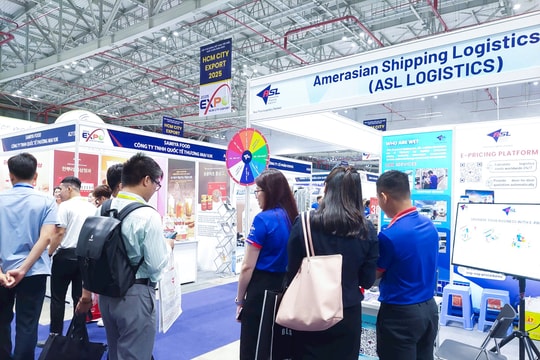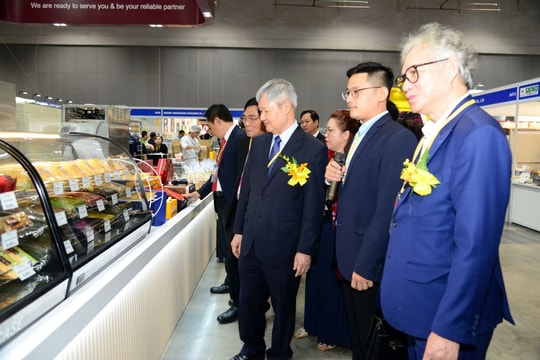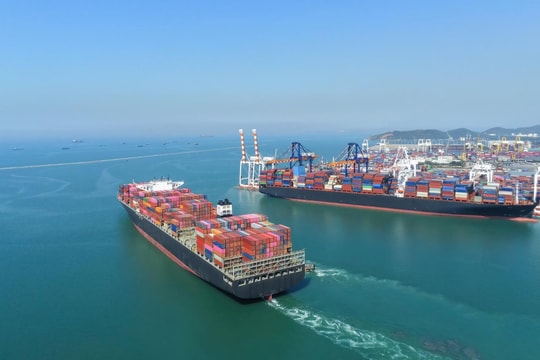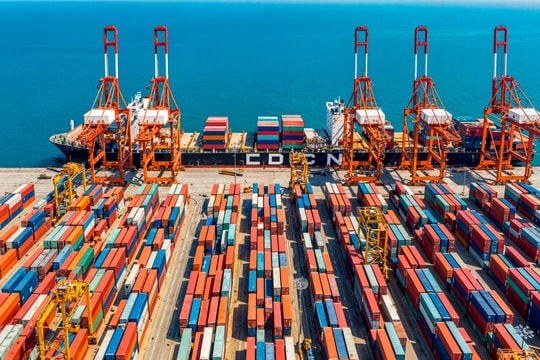Market and Business Community Reactions
Immediately following the announcement of the tariff delay and reduction, Vietnam’s stock market saw a notable rebound. The VN-Index surged by 6.6% on April 10, 2025—marking the strongest gain since June 2011. The business community, particularly in key export sectors like textiles, footwear, and electronics, expressed cautious optimism. Some companies even referred to this decision as a “90-day golden window” to ramp up production, secure new orders, and restructure their market strategies. The U.S.'s flexible trade stance is providing short-term advantages that, if well-leveraged, could yield long-term benefits for Vietnam.
Many economists believe Vietnam’s ability to avoid the 46% tariff—while China faces a hike to 125%—is a clear testament to its adaptability and a fundamentally different foreign policy approach. Businesses see this as an opportunity to reinforce their position in the U.S. market and prepare for a range of future trade scenarios.
Impact on Export Strategies and Market Diversification
Beyond boosting exports, President Trump’s decision is “inadvertently” helping to redefine Vietnam’s role in global supply chains. Corporations like Intel, Apple, and Samsung—already embedded in Vietnam’s manufacturing ecosystem—are ramping up operations to capitalize on the stable policy environment and the temporary lower tariff. This could drive a new wave of FDI, especially in high-tech and semiconductor sectors.

The delay and reduction in tariffs give Vietnamese businesses time to reassess their export strategies. During this 90-day reprieve, companies can accelerate exports to the U.S. and capitalize on the lower rates to boost revenue. It also provides a window for exploring and expanding into new markets, reducing overreliance on any single destination and enhancing resilience against trade fluctuations.
Challenges and Opportunities in Bilateral Trade Negotiations
Vietnam has also received encouraging signals from U.S. authorities. Treasury Secretary Scott Bessent publicly thanked Vietnam for its timely, constructive response and welcomed the bilateral agreement to negotiate a sustainable trade deal.
In addition, Deputy Prime Minister Ho Duc Phoc’s proactive proposal that the U.S. Department of Commerce closely collaborate with relevant Vietnamese ministries and agencies throughout the negotiation process underscores Vietnam’s commitment to transparency, efficiency, and mutual benefit.
The U.S. decision presents Vietnam with a greater opportunity to engage deeply in bilateral trade negotiations. Vietnam must carefully prepare its proposals and negotiation strategies to achieve a fair and lasting trade agreement. At the same time, this process poses challenges in balancing open market policies with the protection of domestic industries.
Outlook and Recommendations for Vietnamese Businesses
In this new context, Vietnamese businesses need to:
Enhance competitiveness: Invest in technology, improve product quality, and optimize production costs to meet increasingly stringent international market demands.
Diversify markets: Expand into other potential markets beyond the U.S., such as the European Union, Japan, and ASEAN countries, to reduce dependency on a single export destination.
Be proactive in negotiations: Actively participate in free trade agreements, utilize tariff preferences, and safeguard corporate interests during global trade negotiations.

Global media attention to Vietnam’s response is also growing. Platforms like Bloomberg, CNBC, and Nikkei Asia have praised Vietnam as a model of “smart and proactive economic diplomacy,” successfully defending national interests without triggering trade tensions. This is a pivotal moment as the world enters a phase of supply chain rebuilding and strategic trade realignment—Vietnam is clearly emerging as a regional bright spot.
The U.S. delay of the 46% tariff and its reduction to 10% brings both challenges and opportunities for Vietnam’s economy and business community. To fully harness this benefit, Vietnam needs a long-term strategy focused on strengthening competitiveness, diversifying markets, and actively engaging in global trade negotiations. Proactivity and flexibility will be key for Vietnam to maintain and enhance its position in global commerce.



.jpg)


.jpg)

.png)












